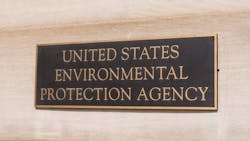Biden administration targets methane releases from oil, gas sector with $850 million in grants
The Biden administration on June 21 said it would make $850 million in funding available for projects to slash methane emissions from oil and gas production.
The Department of Energy (DOE) and the Environmental Protection Agency (EPA) will award the grants, funded through the 2022 Inflation Reduction Act (IRA), in three categories, Deputy Energy Secretary David Turk told reporters on June 20.
The first tranche offers three awards for projects to aid small oil and gas producers in cutting methane releases from existing wells and infrastructure, Turk said. The second includes up to 26 awards to minimize equipment leaks, especially engines and compressors. The third focuses on methane leak monitoring in communities near oil and gas infrastructure by funding partnerships to track methane emissions in specific producing basins.
Oil and natural gas facilities are the nation’s largest industrial source of methane, a pollutant more potent than CO2 and responsible for about one-third of the warming from greenhouse gases occurring today. "Sharp cuts of methane emissions are the most important thing the US can do in the short term” to address climate change, EPA deputy director Janet McCabe told reporters.
The grant program is the latest action taken by the Biden administration to cut methane pollution. In December, the EPA finalized a rule for stricter methane controls from oil and gas operations, including eliminating routine natural gas flaring and minimizing the size and frequency of gas leaks (OGJ Online, Dec. 4, 2023). It followed up in January with a proposal for a $900-1,500/tonne fee for oil and gas companies releasing methane beyond certain levels (OGJ Online, Jan. 16, 2024). In May, the agency finalized tougher industry methane reporting standards (OGJ Online, May 7, 2024). The EPA estimates the rules will slash methane emissions from the oil and gas industry by 80%.
On Thursday’s press call, National Climate Advisor Ali Zaidi described the administration’s target of methane emissions a “no-brainer” because it allows companies to hold onto and sell natural gas, improve the health and safety of Americans, and tackle climate change.
The competitive bid program, which will run through Aug. 26, is open to eligible US industry, academia, and non-governmental organizations, tribes, states, and local government.
Natural gas flaring
While EPA methane rules seek to US eliminate flaring, the World Bank on June 20 released a report that shows global natural gas flaring by oil and gas producers rose 7% last year to 148 billion cu m compared with 2022, a 5-year high. The increase in flaring resulted in an additional 23 million tons of CO2 equivalent emissions, according to the bank’s Global Gas Flaring Tracker Report.
In the US, flaring intensity—the percentage of methane burned in relation to oil and gas production—grew by 11% in 2023 compared with 2022, the World Bank said, mostly due to unusually hot weather in Texas’ Permian and Eagle Ford basins and natural gas pipelines. Still, the World Bank noted that the US “remains one the countries with the lowest flaring intensities in the world.”
Zaidi, on June 20, said that he had not seen the World Bank’s report, but that the US has taken among the most aggressive steps to curb methane emissions from the oil and gas industry by banning routine flaring.
“We know and are confident that by implementing not only those rules, but this broad set of investments as part of a sweeping methane action plan, we will continue to reduce the emissions intensity of this sector of our economy,” Zaidi said.
About the Author
Cathy Landry
Washington Correspondent
Cathy Landry has worked over 20 years as a journalist, including 17 years as an energy reporter with Platts News Service (now S&P Global) in Washington and London.
She has served as a wire-service reporter, general news and sports reporter for local newspapers and a feature writer for association and company publications.
Cathy has deep public policy experience, having worked 15 years in Washington energy circles.
She earned a master’s degree in government from The Johns Hopkins University and studied newspaper journalism and psychology at Syracuse University.
